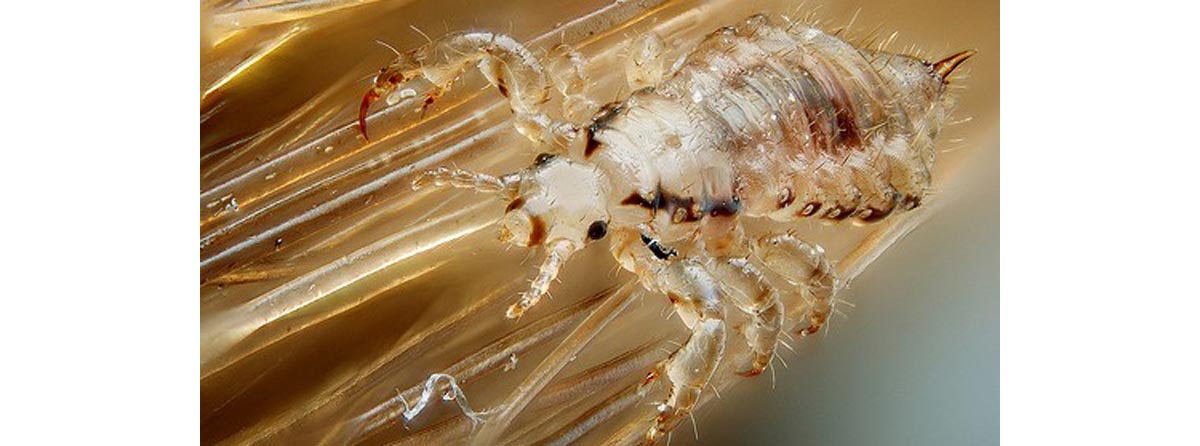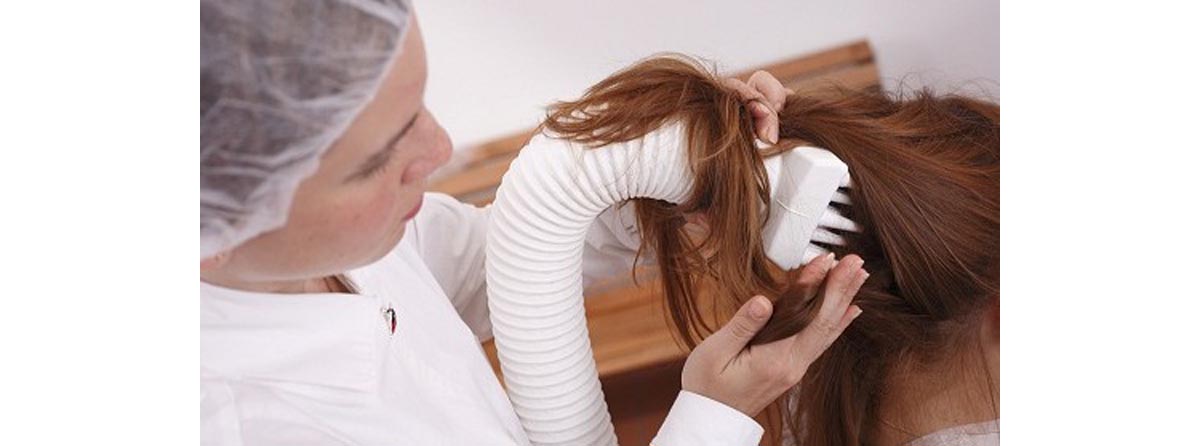Most parents have — at one point or another, or maybe even regularly — received that infamous letter from school informing them that the dreaded head lice infestation made an appearance in their child’s classroom. The thought of tiny insects infiltrating the class and making their way into the scalps of dozens of children is enough to send many parents into full blown panic mode.
No parent wants to hear that tiny insects are living in their child’s scalp, but they are a very common problem and occur quite often in children between the ages of 3 and 12 years old.

Head lice are tiny insects that live in the human scalp and hair shaft. Once present, they latch onto the scalp and draw the tiny amount of blood that they will then feed off of. Unlike mosquitos and certain other insects, head lice do not carry or spread diseases and they are not dangerous. Hey, at least there's some good news!
When the lice bite the scalp, it often results in itching and discomfort and can cause mild swelling and inflammation. As the child scratches the scalp to relieve the itch, it can lead to additional irritation of the skin and sometimes an infection of the scalp can develop. Just because a child presents with an itchy scalp does not mean that she or he has head lice.
Although an itchy scalp is the most common symptom of lice and many itchy scalps are ultimately indeed caused by head lice, there are other conditions that can cause itchy scalp, such as dry skin or dandruff. Additionally, some children who do have head lice will not experience any itching of the scalp.
Head lice are wingless insects, so contrary to popular belief, they cannot fly from one person to another. Not only are they incapable of flying, they are also unable to jump. That fact goes a long way toward explaining why head lice are most commonly found in populations of children, since they are in close proximity and have more physical contact than most adult populations
It is a myth that head lice are more common in "dirty" people who have unwashed or dirty hair. In fact, head lice do not thrive in cluttered homes and people with head lice are not any more likely to have poor hygiene than people who do not have head lice. Simply washing your hair is not enough to get rid of head lice, and keeping your hair clean is not enough to prevent head lice from getting onto your scalp. Head lice cling to hair follicles and the lice eggs, or nits, will cling to hair that is both dirty and clean.
Truths About Head Lice
Treatment Should Begin Immediately
Because head lice are so contagious, it is important to begin treatment immediately to prevent them from spreading quickly from one person to another. Head lice are notoriously known for being difficult to treat, however, when treatment is started promptly and it is done on a continuous schedule, the treatment of head lice is generally very effective. When head lice are identified within the household, it is important to check all family members also, even if they are not yet displaying any symptoms. Within a household, after all, you are bound to hug, touch, and share personal care items. If one person is infected, the entire household is at risk of developing head lice.

You Can See Lice
Although head lice are tiny insects, they are not so tiny that they can’t be seen with the naked eye. It will take some close examining of the scalp, but head lice are visible. Upon examining your child’s scalp, you may see the lice eggs, or nits, clinging to the hair shaft near the scalp. The nits appear as tiny specks that are yellow, brown or beige in color. The eggs remain on the hair shaft very near to the scalp because it is the perfect warm temperature to maintain their environment until they hatch. The nits resemble dandruff, however, unlike dry skin flakes, the eggs will not fall off when they are brushed or shaken. The eggs will hatch roughly a week or two after they have been laid. After the lice hatch, the empty shell of the egg remains attached to the hair shaft. These empty shells are often the easiest to spot, because as the hair grows, the shell moves further in distance from the scalp. Most of the time, it is much more common to notice the nits than it is to find the actual lice crawling around on the scalp. If the live head lice are seen on the scalp, it is likely a more severe infestation. The adult lice and their babies (nymphs) are grayish-white or beige. The adults are about the size of a sesame seed and the nymphs are smaller. Although they feed on blood many times throughout the day, they can survive for as long as 2 days unattached to the scalp.
They Cause Itching and Scratching
When head lice bite the scalp, the enzymes in their saliva cause a chemical reaction that generally causes itching to occur. In some individuals, the itching may not occur right away, or even at all. It all depends on the level of skin sensitivity in the individual. Most children have a more sensitive scalp than adults, and therefore usually will experience itching almost immediately after an infestation occurs. For other children and some adults, it can take several weeks before an itchy scalp develops. Some children will complain of feeling things moving around on their head, or a tickling sensation. Upon examination of the scalp, tiny sores or small red bumps may be noticeable. When severe itching and excessive scratching occur, a bacterial skin infection can develop. Symptoms include red and inflamed skin, tender scalp, crusting and/or oozing, and swollen lymph glands in the neck or behind the ears. The infection can be treated with oral antibiotics.
Getting Rid of Lice in the Home
We now know that many of the old wives tales about how to get rid of lice are ineffective. Putting clothing and bedding in a sealed bag in the freezer and isolating children with head lice are not going to stop the spread of lice or remove them from the home. The most effective way to deal with a head lice infestation in the home is to vacuum all areas where the infected individual has placed her head, such as bedroom carpet, couch, floor pillows, etc. Wash all linens and towels in hot soapy water and dry them in the dryer on the highest heat setting. These steps should be taken as soon as treatment for head lice has begun to eliminate any remaining lice and kill off nits.
- Photo courtesy of Gilles San Martin by Flickr : www.flickr.com/photos/sanmartin/4900275659/
- Photo courtesy of Lajos.Rozsa by Wikimedia Commons : commons.wikimedia.org/wiki/File:LouseBuster_treatment.JPG


Your thoughts on this